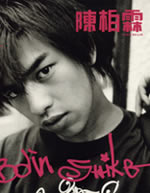Japanese Homo-Erotica and the North American Women Who Love It
by Raymond Paglicauan
 | |
What started in Japan as a gay romance genre has found its way overseas thanks to the internet and a wide fan base. Yaoi is a comic book phenomenon on male homo-erotic romance stories that are written for women by women and is also referred to as Boy’s Love. The stories themselves often center around the lives of male students and their relationships to each other and older men. Many Canadian women have recently shown great interest in this genre and have joined its growing online community. Thanks to internet forums and blogs, there is now a place for yaoi to flourish outside of Japan. But what does this mean for the young women who participate and view this material? And does it shake the foundations we have on our view of sexuality in North America?
Yaoi categorizes itself based on its female authorship and readership. Many question how women can relate to these homo-erotic love stories. This may have something to do with the relationship between the two male participants of yaoi storylines who represent a pseudo male and female relationship. There are two roles that are fulfilled in these romances: the seme (“to attack”) and the uke (“to receive”). The uke is often characterized with a youthful innocence with feminine traits. Some argue that when women write these stories they are placing themselves under the guise of the uke. In this way they can live the ideal relationship through these characters. What about the seme? This character is idealized as the perfect man. In the eyes of those who write and read these comics, the seme represents what men should be. But at the end of the day they often become untouchable because they belong to their male counterparts. The seme and uke represent the dichotomy between the masculine and the feminine, youth and experience. What makes them and their stories attractive is the oppositions they represent which often leads to conflict, and how they are able to solve these issues because they manage to fit together.
The romance between these two archetypal figures has sparked the interests of many outside of Japan. The largest demography are young women from North America who have access to yaoi via the internet. According to Pira Urosevic, an expert on Japanese manga (Japanese comic books) culture and a prominent member of an online yaoi community, Japan represents an interesting duality, “Japan is a nation that is highly sexualized but at the same time reserved.” Urosevic explains that while the Japanese might hesitate to hold hands with their partners in public they don’t frown upon expressions of sexuality in literature or animation, “No one bats an eye at a man reading [erotic comics] in a packed subway car.” The Japanese acknowledges sexuality on a different cultural plateau, “You can check into the most outrageously themed Love Hotel room for a romp with your lover/spouse, because there is no privacy at the small apartment you share with your parents.” From this vantage point we can understand that those who read and enjoy these comic books are, in a way, expressing sexuality without necessarily acting upon it. They can retain a sense of propriety while exploring conventions that other cultures have marked as taboo.
Pira Urosevic claims that those North American females who indulge in the writing and art of yaoi are doing so in the natural way of curiosity and exploration, “They are healthy young women who are awaking sexually like their male counterparts. The only difference is that young males are expected to [be] sexually charged at this age [and] good girls don’t think about those kinds of things.” She questions why people never ask the same question to males who enjoy pornography that feature two women performing sex. She also addresses the concern over the age of those who read yaoi, most of whom are in the early phases of their adolescence, “Should 14 year old girls be looking at gay erotica? It depends on the 14 year old girl and to my experience they find their own comfort zone. Many settle on shojo (manga aimed at a female audience) or shonen-ai (manga that features homosexual romance stories) that are suggestive but heavily into the romance.” These young women are digesting the romantic tales about young men while finding a way to relate to them. What’s important to Urosevic are the positive consequences of this genre on acceptance and tolerance, “Here is a HUGE group of young women who are embracing the concept of homosexuality. Not for themselves but in general. They are the next generation of mothers whose children will not have to hide their homo-erotica from their parents.” This community goes beyond acceptance and toleration, they are celebrating and acknowledging the beauty behind gay romance stories.
Yaoi online communities have, in recent years, attracted international attention to those who have no access to this Japanese medium. These forums and blogs are now places where many young people are learning about themselves and discussing the nature of human sexuality. Urosevic ponders on the achievement of these internet groups, “Now young people are reaching out, exploring and questioning what it is to be straight, bi or gay. [They] are less and less willing to [be] boxed in by rules that they sincerely may feel don’t apply to their make-up.” She applauds the positive outcome that yaoi has given young people, “One thing manga has provided the Western teens with is a fresh way of seeing sexuality. Sure it’s out of context (the way the Japanese view it is something you have to grow up Japanese to understand fully), but females here have embraced it because it speaks to them where no one ever spoke to them before and in the online world they are now speaking out.”
Δεν υπάρχουν σχόλια:
Δημοσίευση σχολίου